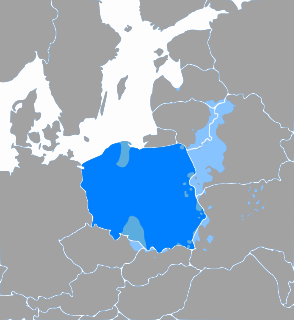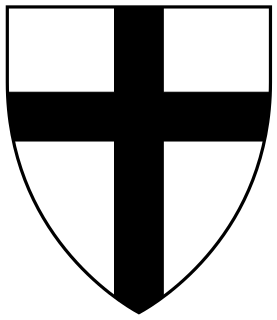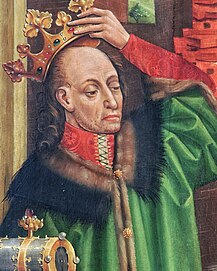
Bolesław-Jerzy II was a ruler of the Polish Piast dynasty who ruled the originally Ruthenian principality of Galicia. After his death started the Galicia–Volhynia Wars over succession of Galicia and Volhynia.
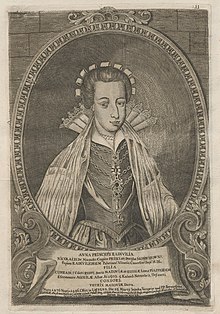
Anna Radziwiłłówna was a Lithuanian noble woman and Duchess of Masovia.
Leszek of Masovia was a Polish prince from the Piast dynasty, the Duke of Masovia from 1173 until his death. He was the only son of Bolesław IV the Curly, Duke of Masovia and High Prince of Polan, who survived father. After his father death he inherited Masovia. At the beginning, Leszek ruled under the guardianship of his uncle Kazimierz II the Just. He was a man of poor health. For a short time he supported his other uncle, Mieszko III the Old, but later decided to reconciled with Kazimierz II, who after Leszek's death inherited his duchy.
Alexandra was the youngest daughter of Algirdas, Grand Duke of Lithuania, and his second wife, Uliana of Tver. Though Alexandra's exact date of birth is not known, it is thought that she was born in the late 1360s or early 1370s. In 1387, she married Siemowit IV, Duke of Masovia, and bore him thirteen children.
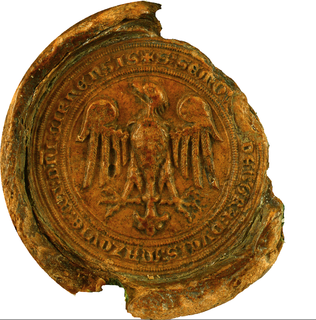
Siemowit III of Masovia was a prince of Masovia and a co-regent of the lands of Warsaw, Czersk, Rawa, Gostynin and other parts of Masovia.

Helena of Znojmo, was a Bohemian princess, a member of the Přemyslid dynasty. She was the daughter of Duke Conrad II of Znojmo and his Serbian wife Maria of Rascia. Helena was probably named after her maternal aunt, Queen Helena of Hungary, wife of King Béla II.

Konrad III the Red, was a Polish prince member of the House of Piast in the Masovian branch. He was a duke of Czersk, Liw, Warsaw, Nur, Łomża, Ciechanów, Różan, Zakroczym and Wyszogród during 1454-1471 jointly with his brothers, Duke of Płock, Wizna, Płońsk and Zawkrze during 1462-1471, and after the division of the paternal domains in 1471, sole ruler over Czersk and Liw, over Wyszogród during 1474-1489 and again in 1495, over Zakroczym since 1484, over Nur since 1488 and over Warsaw since 1489.

Stanisław of Masovia, was a Polish prince member of the House of Piast in the Masovian branch. He was a Duke of Czersk, Warsaw, Liw, Zakroczym and Nur during 1503-1524 jointly with his brother.

St. Anne's Church is a church in the historic center of Warsaw, Poland, adjacent to the Castle Square, at Krakowskie Przedmieście 68. It is one of Poland's most notable churches with a Neoclassical facade. The church ranks among Warsaw's oldest buildings. Over time, it has seen many reconstructions, resulting in its present-day appearance, unchanged since 1788. Currently it is the main church parish of the academic community in Warsaw.
Bolesław IV of Warsaw, was a Polish prince member of the House of Piast in the Masovian branch. He was Duke of Warsaw during 1429–1454 and sovereign Duke of Podlachia in 1440–1444.

Bogislav IX, commonly known in English as Bogislav IX, was a duke of Pomerania in Pomerania-Stolp, whose residence was Stargard. His first cousin Eric of Pomerania tried in vain to have him recognized as his heir to the Kalmar Union.
Euphemia of Masovia, was Duchess of Cieszyn by marriage to Bolesław I, Duke of Cieszyn, and regent of the Duchy of Cieszyn during the minority of her sons from 1431.
Euphrosyne of Masovia also known as Eufrozja (1292–1328/1329) was Duchess of Oświęcim by her marriage.
Trojden I, was a Polish prince member of the House of Piast, Duke of Czersk since 1310, ruler over Warsaw and Liw since 1313, regent of Płock during 1336–1340.
Konrad Januszowic, was a Polish prince member of the House of Piast.
Trojden II of Płock, was a Polish prince member of the House of Piast from the Masovian branch. He was a Duke of Płock, Rawa Mazowiecka, Gostynin, Sochaczew and Belz during 1426-1427 jointly with his brothers.
Amelia of Masovia, was a Polish princess member of the House of Piast in the Masovian branch.
Catherine of Masovia, was a Polish princess member of the House of Piast in the Masovian branch.
